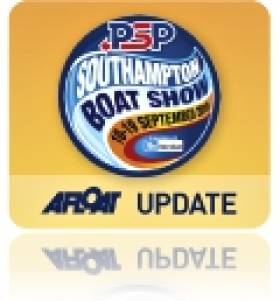Displaying items by tag: news update
#DefenceWhitePaper – A Symposium on the White Paper on Defence was hosted by Minister for Defence Mr. Simon Coveney, T.D. today in Farmleigh House, Dublin.
A new White Paper on Defence is being prepared and the symposium was part of the concluding phase of that process. The symposium facilitated an open policy debate, as envisaged under the Civil Service Renewal Plan, and drew a wide range of national and international policy experts and practitioners.
The Minister said "Defence is an issue which generally receives very little debate or discussion in Ireland". He noted that the publication of a Green Paper on Defence in July 2013 had been a welcome development in this regard. However, while there has been a significant degree of consultation in the preparation of a new White Paper on Defence, the Minister noted that "the views of individuals and organisations, although valuable, do not constitute debate."
For this reason, the Minister arranged for a symposium "to provide an opportunity to hear alternative views, to learn from the experience of others and to debate the merits of differing courses of action". The Minister also highlighted the need for Defence to "clearly articulate the rationale underpinning expenditure and funding requirements".
The Minister was very pleased at the number of participants that were able to attend the event. The participants came from national and international organisations and represented a broad range of interests. While not expecting to produce a consensus of views on the day, the Minister hoped that "all concerned would be better informed of the challenges and have been able to contribute to the choices that lay ahead"
In July 2015, the Minister intends bringing a draft White Paper on Defence to Government.
Tourist Trail 'Could Enrich' Dublin's Docklands
#TouristTrail - The Sunday Times reports of a proposed Dublin Docklands tourism trial that could feature stories such as the gory death of pirates, the plight of lepers on Misery Hill, and the burgeoning success of U2.
The plan was discussed last Wednesday at a meeting in Dublin city council, attended by representatives from the Department of Environment, Waterways Ireland, Nama, the Dublin Dock Workers Preservation Society, the Dublin Port Company and Joe Costello, a Labour TD.
"The west of Ireland has the Wild Atlantic Way, and now there's going to be the Ancient East trail in the southeast," said Costello. "Yet you can walk down the Liffey in Dublin and there's nothing to tell you about its rich seam of history. From the Vikings and the Famine ships, to the Jeanie Johnston and U2's first recording studio, the area has a lot to offer.
For more on this tourism trail proposal click, here.
Continued Growth in Overseas Visit Numbers
#TourismRise – Central Statistics Office data released today shows the number of overseas visits to Ireland between December 2014 and February 2015 increased by 10.3% compared to the corresponding period of 2013/2014.
Minister for Transport, Tourism & Sport Paschal Donohoe T.D. welcomed the positive data: 'I am very encouraged to see that the data from the CSO continues to show significant and steady growth in our overseas visit numbers. On Monday last the Taoiseach and I launched a new and ambitious Tourism Policy covering the decade ahead. The aim is that in 2025 Ireland will have a vibrant, attractive tourism sector that makes a significant contribution to employment across the country.
"People, Place and Policy- Growing Tourism to 2025" represents a fundamental examination, and a clear statement, of what we want to achieve for Irish tourism in the coming decade. It sets out ambitious targets for growth in overseas visits and associated revenue, and increased tourism employment. The visitor numbers released today show that our ambitious policy is building from a strong base. All of our main overseas markets are showing good growth levels and I know that sentiment within the industry is very positive for the remainder of the year.'
Comparing the three-month period Dec '14 – Feb '15 with the period Dec '13 – Feb'14:
Overall trips to Ireland were up by 10.3%
North America was up by 6.6%
Visits from Mainland Europe were up by 18.1%
Visits from the rest of the world increased by 0.6%
Great Britain registered an increase of 7.7% in visits.
Minister of State for Tourism and Sport Michael Ring T.D. added: 'I am confident that the trend in visitor numbers shown in today's release will continue for the remainder of the year which would result in a fifth successive year of growth. This would represent a truly remarkable turnaround after the significant decline in the period 2008-2010 and a vindication of the Government's commitment to placing tourism at the centre of our economic recovery plan.'
Niall Gibbons, CEO of Tourism Ireland, said: 'Today's figures represent a really positive start to 2015, as we roll out our promotional programme around the world. I am delighted to see an increase in overseas visitor numbers of +10% between December 2014 and February 2015, about 134,300 additional visitors when compared with the same three-month period last year. I am really pleased to see growth from our main market areas around the world – including Britain (+7.7%), North America (+6.6%) and Mainland Europe (+18%).
Our promotions received a tremendous boost earlier this month, with our Global Greening initiative for St Patrick's Day – which was even bigger and better than ever before. Vast positive coverage was generated around the world in print, broadcast, social and online media – as the 'greenings' captured the imaginations of people everywhere at a key time for holiday planning and decisions.
St Patrick's Day traditionally marks the real start of the tourism season for us and we took every opportunity to capitalise on Ireland's heightened profile. Our aim is to ensure that 2015 is the best year ever for Irish tourism when we expect to welcome 7.74 million visitors – surpassing the previous record year of 2007.'
Welcoming today's figures, Fáilte Ireland CEO Shaun Quinn emphasised: 'Although these figures are only for the start of the year, all indications point to 2015 as looking set to be another impressive year for tourism with growth trends showing no sign of slackening.
Performance this year will also be buoyed up by the relative weakness of the Euro to the Dollar and Sterling and this development, combined with the fact that tourism here is offering value for money satisfaction levels not seen since 2002, will help to ensure that Ireland will be an attractive and competitive option for visitors in the year ahead.'
#NewTourismPolicy - The Government's new tourism policy, 'People, Place and Policy: Growing Tourism to 2025' was launched by Minister for Transport, Tourism and Sport, Paschal Donohoe along with An Taoiseach, Enda Kenny at Kilkenny Castle today.
The new Policy Statement sets out a range of objectives and aims to grow tourism over the next decade so that, by 2025, revenue from 10 million overseas visits will increase to €5 billion, enabling employment in the sector to rise to 250,000.
The policy follows recent CSO figures as previously reported on Afloat.ie that revealed in 2014, €3.5 billion was spent by overseas visitors in Ireland.
Speaking at today's launch, Minister Donohoe said: 'After a significant decline in the period 2008 to 2010, we have witnessed four years of successive growth in our overseas visit numbers. We want to ensure this positive momentum is maintained in the longer term to benefit not just those directly involved in tourism but also the economy as a whole'.
"'People, Place and Policy – Growing Tourism to 2025' represents a fundamental examination, and a clear statement, of what we want to achieve for Irish tourism in the coming decade. It sets out ambitious targets for growth in overseas visits and associated revenue, and increased tourism employment."
Headline Goals of the Tourism Policy Statement
The Tourism Policy Statement has three headline targets, to be achieved by 2025:
Revenue from overseas tourism, in real terms and excluding air fares and ferry charges, will grow to €5 billion per year in 2025 from €3.5 billion in 2014;
250,000 people will be employed in tourism, compared with an estimated 200,000 at present; and
We will see 10 million overseas visits to Ireland, compared to 7.6 million in 2014.
Framework and key policy objectives: People, Place and Policy
The Tourism Policy Statement's guiding principle is to set out Government policies to enable Ireland's key attractions of People and Place to combine effectively to maximise the economic, social, and environmental benefits of tourism. The Statement includes policies on:-
• Visitor Revenue Rather than Visit Numbers
The Policy Statement shifts from a previous focus on simply growing the numbers of trips to Ireland by overseas visitors to increasing the economic contribution of overseas visits. This is measured by CSO surveys of expenditure within Ireland by overseas visitors. While the domestic tourism market will continue to play a significant complementary part, supporting tourism enterprises at times and places where overseas visits are fewer, the primary focus of the Statement is in growing overseas revenue and ultimately exports.
• Tourism Marketing
Overseas marketing will be targeted across a range of countries and market segments, focusing on the highest revenue potential while avoiding being too vulnerable to downturns in a few markets.
• Continued Key Role in Tourism for Festivals and Events
A new policy objective is that support for events will be weighted towards those that offset the seasonal nature of tourism as well as, in line with the overall aims, those with greatest overseas tourism potential. The appropriate use of themed years, including a possible repeat of the Gathering, will be pursued further when drawing up the Tourism Action Plan (see below).
• Training and Skills Development in Tourism
State support for training and career development in the tourism sector will aim to ensure the industry can meet the needs of future visitors and enable those working in the sector to achieve their potential.
• Competitiveness in Tourism
The Statement reiterates the critical importance of competitiveness, in terms of quality, value and cost. In line with previous Budget statements, it reaffirms that the maintenance of the 9% VAT rate in the tourism sector will depend on the sector ensuring that it remains cost-competitive.
• The Role of Communities and Local Authorities
The Policy sets out the vital role of local communities in developing and delivering quality tourism experiences. Local Authorities will have a key role in leading and supporting communities in tourism, as they already do, but this is now recognised at policy level. At the same time, the particular strengths of local authorities in developing tourism, within their overall economic development role, are recognised and reaffirmed.
• Whole of Government Approach
The Policy also reaffirms the vital role of Government in supporting tourism across policy areas and Departments, including taxation, environment, and enterprise policy. It commits to a whole-of-government approach to ensure the ambitious targets are met.
Commenting on how the Policy Statement will be implemented, Minister Donohoe stated: 'In the coming weeks I will be announcing the membership of a Tourism Leadership Group, which will oversee the creation of an initial three-year Tourism Action Plan for 2015-2018, to draw up the medium-term actions necessary to achieve the long-term aims in the Tourism Policy Statement.
The many submissions received during the formulation of 'People, Place and Policy' will again be examined during the Action Plan stage to see if there are specific actions which should be implemented. If the industry, stakeholders or indeed anybody with an interest in Irish tourism wishes to suggest additional actions, these can be sent directly to my Department for consideration'.
"I believe the Policy Statement launched today provides the foundations for a prosperous and sustainable tourism sector over the next decade. While the targets we have set are ambitious, I have no doubt that by working together, we will achieve them."
#TourismBoost - An increase of €286m or +8.8% in spending by tourists from abroad for 2014 compared to 2013, that's according to the Central Statistics Office (CSO) figures published today.
The figures confirm the trend indicated by earlier statistics that the revenue accruing to the Irish economy from overseas visitors continued to grow in 2014. Today's data shows that in 2014 €3.5 billion was spent by overseas visitors in Ireland.
Speaking this afternoon, the Minister for Transport, Tourism and Sport, Paschal Donohoe TD, said: 'I welcome today's CSO 'Tourism and Travel' publication, which shows an increase of €286 million, or +8.8%, in spending from overseas visits to Ireland for 2014 compared to 2013'.
"The tourism sector is playing a critical part in our economic recovery. To support the sector, the Government introduced measures like a reduction in the rate of the Air Travel Tax to zero and the reduction of VAT to 9% on tourism-related services. These measures have helped reinforce the message that Ireland continues to offer greatly improved value and today's data shows that they have worked in terms of enticing visitors to come and spend here. We remain ambitious though and the coming weeks will see the publication of our new Tourism Policy; 'People, Place and Policy – Growing Tourism to 2025', which sets ambitious but realistic targets for the decade ahead in terms of growing overseas revenue, the numbers employed in the tourism sector and visitor numbers."
Today's figures from the CSO also show that when compared to 2013, there was a 4.5% increase in revenue from visits from Great Britain, a 5.9% increase from Mainland Europe, a 13.7% increase from North America and a 17.3% increase in revenue from long-haul destinations. In terms of the reason for visiting Ireland, the revenue accruing from the key target 'holidaymaker' segment showed an increase of 8.1% compared to 2013.
Minister of State for Tourism and Sport, Michael Ring TD, said: 'I am pleased to see today's confirmation from the CSO that the tourism sector continues to contribute to our economic recovery. The Government and the tourism industry will continue to work hard to maintain this positive momentum and crucially to maintain our competitiveness. We continue to invest in our tourism sector and just last week I announced funding of €564,000 for 187 local festivals and events across Ireland aimed at further boosting tourism activity in 2015'.
Commenting on the CSO figures, Niall Gibbons, Chief Executive of Tourism Ireland, said: 'Today's CSO figures are very strong, confirming that, where purpose of visit is concerned, holidaymakers from overseas grew by +8% in 2014. I am pleased to see an increase in holiday visitors from the important Great Britain and North American markets, with growth of +9% and +13% respectively. Mainland Europe also performed strongly, with a +7% increase in holidaymakers, driven largely by +17% growth in German holidaymakers.
He added, more importantly for the Irish economy, revenue from our overseas tourists grew by +9% in 2014, an additional €280 million compared with 2013'.
"Given that overseas tourism business accounts for almost 60% of all tourism revenue, this is good news indeed, with the increase in overseas holidaymakers and revenue helping to boost employment around the country. We are determined to ensure that tourism growth continues. We will be pulling out all the stops in 2015, to keep the momentum going and ensure that this is the best year ever for Irish tourism, when we aim to welcome 7.74 million visitors, delivering almost €4 billion in overseas tourism revenue to the Irish economy, surpassing the previous record year of 2007."
Meanwhile, Shaun Quinn, Chief Executive of Fáilte Ireland said: 'Today's figures confirm that 2014 was a fantastic year for tourism with the trend towards growth deepening, following a very successful 'Gathering' year in 2013. The increase in both numbers and revenue from overseas is extremely important and is delivering the additional revenue and jobs which this country needs, particularly in many parts of rural Ireland.
"The performance of all our key international markets is encouraging with the strong growth from North America and the UK being particularly helpful. This is a trend which we are confident will continue into 2015, buoyed up by the relative weakness of the euro to the dollar and sterling.
The chief executive concluded by saying "In the meantime, Fáilte Ireland will be using every opportunity we can identify to maximise further tourism growth and to ensure the sector delivers on the potential we believe exists for more increases in revenue and employment'.
Launch of Tourism Ireland’s Marketing Plans 2015
#TourismIrelandPlans - Tourism Ireland's marketing plans to promote Ireland overseas in 2015 and beyond was launched by Minister for Transport, Tourism and Sport, Paschal Donohoe T.D at an event yesterday and attended by tourism industry leaders from around the country.
The organisation aims to build on this year's growth in overseas tourism and to welcome 7.74 million visitors to Ireland in 2015 – surpassing the previous record year of 2007. This figure will represent growth of +6% over 2014 and deliver almost €4 billion to the Irish economy (+7%) next year.
In the longer-term, the aim is to welcome some 10 million visitors to Ireland in 2025, contributing €5 billion to the economy and helping to sustain about 250,000 jobs.
• Tourism Ireland sets its sights on record year for Irish Tourism in 2015
• Ambitious targets will see overseas tourism deliver 10 million visitors and €5 billion for Irish economy in 2025
New TV ads – part of Tourism Ireland's global advertising campaign, 'Jump into Ireland' – were also unveiled. The ads will launch in January 2015 in 22 markets around the world – on television, in cinema and online. The soundtrack for the ads is the hit single "Love Like This" by popular Dublin rock band Kodaline.
Building on this year's success and sustaining growth into the future is at the heart of Tourism Ireland's strategy in 2015. The plans will see Tourism Ireland prioritise those markets that offer the best return on investment, in terms of holiday visitors and revenue i.e. Britain, North America and Mainland Europe.
Ireland's 'best prospect' visitors will be targeted more closely – with distinctive holiday experiences, events and special offers tailored to their interests and designed to trigger their 'must go now' impulses. Emerging markets of high potential will also be targeted, particularly China and India, where Tourism Ireland will highlight the new British-Irish Visa Scheme.
Important factors working in our favour for 2015 include new access developments; as well as consumer confidence, which is returning in our key source markets. The Ireland 'brand' or image abroad is strong; continued product investment enhances our offering overseas – particularly investment in the Wild Atlantic Way. (see report of launch on Afloat.ie)
Exchanges rates for sterling and the dollar are favourable; and the lower price of oil will help make air and sea routes more sustainable.
In 2015, Tourism Ireland will continue to leverage its strength in digital and social media. The organisation is now the fourth most popular tourism board in the world on Facebook (about 2.65 million fans), number three on Twitter and number two on YouTube.
Promoting the Wild Atlantic Way will continue to be a major focus of Tourism Ireland's activity around the globe next year; the organisation will also showcase Dubline, the new Dublin Discovery Trail.
Next year marks 150 years since the birth of world-renowned Irish poet and Nobel laureate, WB Yeats, a colossus on the world literary stage and an important figure in the history of our country; Tourism Ireland will promote Yeats 2015 – particularly to its 'culturally curious' audience. And, next year has also been designated ID2015 (the year of Irish design), a showcase of the best of Irish design.
This special year will help raise the profile of Irish design and designers and show how they reflect our unique culture, helping to give us 'stand-out' on the world stage.
Speaking at the launch, Minister Donohoe, said: "The international tourism marketplace is a competitive one so it is crucial that we show no signs of complacency where the increase in our overseas visitor numbers is concerned. We must continue to identify the most effective ways to attract tourists to Ireland, so that we can support the jobs we have in the sector and help create new ones in the future. Government policies, such as reducing the rate of the air travel tax to zero from April 2014 onwards and retaining the reduction of VAT at 9% on tourism-related services in Budget 2015, support this objective. Similarly, the focus we have placed on newer markets, such as China and India, through the introduction of the British-Irish Visa Scheme, encourages visitors from further afield in greater numbers.
"There is a direct correlation between tourism growth and good connectivity. The expansion of ferry services on the Irish Sea provided a major boost for tourism in 2014 and the promise of further expansion of air services in 2015 bodes well for the future. Continuing to offer distinctive holiday experiences that are tailored to specific markets, such as golfers and adventure tourists, will also help keep us ahead of the game. Building on the success of the Wild Atlantic Way, developing a branding model for Dublin through the recently established Grow Dublin Tourism Alliance and developing a unifying tourism proposition for the south and east region will ensure that all parts of Ireland benefit from our tourism marketing strategy.
I am always delighted to lend my support to the promotional efforts of all of our tourism agencies in the work that they do. And I am committed to the continuation of that support throughout 2015 and beyond."
2014 Performance
Latest estimates indicate that, by year end, 7.3 million people will have visited Ireland in 2014, representing an +8.8% increase over 2013, with growth recorded from all market areas. Revenue generated by international visitors is expected to be approximately €3.7 billion, +10.9% increase over last year. Niall Gibbons, CEO of Tourism Ireland, said: "2014 is set to be another record year for visitor numbers from North America, Germany, France and Spain, as well as from our long-haul markets.
Throughout the year, Tourism Ireland undertook a packed programme of promotions, to bring Ireland to the attention of travellers everywhere. Thousands of opportunities were created for potential visitors around the world to read, hear or watch positive messages about Ireland; Tourism Ireland estimates that this media exposure is worth an estimated €280 million in equivalent advertising value."
2015 and Beyond
Tourism Ireland's targets for 2015 will see Ireland welcome 7.74 million visitors, representing growth of +6% over 2014. Commenting on the year ahead, Niall Gibbons said: "Following a successful 2014, ambitious targets have been set for 2015 and beyond. We will continue to place a major focus on promoting the Wild Atlantic Way, as well as on Dubline (the Dublin Discovery Trail). We will promote specific themes, including ID2015 and Yeats 2015. And we will highlight the new British-Irish Visa Scheme in China and India, which will enable Chinese and Indian visitors to visit both Ireland and the UK, including Northern Ireland, on a single visa of either country."
Access developments for 2015 include a new Aer Lingus flight from Washington DC to Dublin, a new United Airlines flight from Chicago, a new Transavia service from Paris, as well as other new air routes like a Finnair service from Helsinki and SAS flight from Gothenburg in Sweden.
Royal Navy OPV to Make Appearance at Southampton Boat Show
#southamptonboatshow – In addition to the boats on display and that of the tallship Pheonix visiting the PSP Southampton Boat Show will be the Royal Navy's HMS Severn (P282), which too will be open to visitors albeit for one day.
HMS Severn will be a visitor attraction next Thursday 18th September. You are invited to come board the 1,677 tonnes OPV offshore patrol vessel on that day (between 1 and 4pm) when she is berthed opposite Solent Park. It is understood that she acted as the starter ship during the Tall Ships Race from Falmouth last month.
She is the second of the River-class built by locally at Vosper Thornycroft's Woolston yard in Southampton.
The 79m vessel is based in neighbouring Portsmouth Naval Base where she is part of the Fishery Protection Squadron that inforces UK and EU laws during 275 days spent at sea annually. Other tasks for her crew of 45 can be anything from fire-fighting to disaster relief operations.
She along with her sister ships, entered service in 2003 and they replaced the Island Class Patrol Vessels, where one of the vessels was converted into a private luxury superyacht.
Newbuilds: Incoming 'Tide' Class for UK’s Naval Auxiliary Service
#RFAnewtankers – The Royal Fleet Auxiliary (see tanker visit to Dublin Port) have ordered a new class of replenishment tanker following a steel-cutting ceremony at Daewoo Shipbuilding and Mechanical Engineering's (DSME) Opko shipyard in South Korea.
DSME will build four of the British-designed 'Tide' class which will replace vessels including the 'Rover' class RFA Gold Rover (A271). The replacement programme is part of the UK MoD's Military Afloat Reach and Sustainability (MARS) Fleet Tanker programme. For more on this story, Ships Monthly has a report.
RFA Gold Rover's visit late last month to Dublin Port was unusual given she is a member of the Royal Fleet Auxiliary, which supports Royal Naval vessels at sea by replenishing fuel, supplies and stores.
Final ‘Invincible’ Aircraft-Carrier HMS Illustrious Retires
#HMSillustrious– HMS Illustrious (RO6), the Royal Navy's sole remaining 'Invincible' class aircraft-carrier was decommissioned in a ceremony at Portsmouth Naval Base yesterday, writes Jehan Ashmore.
She served for more than three-decades as the back-bone of the Royal Navy and in that timeframe she sailed 900,000 miles.
HMS Illustrious last month returned to her homeport of Portsmouth for her final time. Before she berthed in the Hampshire port, she met her successor at sea, HMS Ocean (L12).
As previously reported on Afloat.ie, HMS Ocean had gone for a £65m refit at Devonport Royal Dockyard. The major overhaul sees her take over duties of HMS Illustrious as the UK's on-call combat helicopter-carrier.
Launched in 1978 at Swan Hunter on the Tyne, the 22,000 tonnes HMS Illustrious would later be given her nickname 'Lusty' by her crew members. She made a farewell tour of UK ports last year, among them Liverpool. As the last of the 'Invincible' trio, she followed leadship HMS Invincible and Ark Royal.
The class were made famous for carrying 'Harrier' VSTOL jump jets that proved a vital role in the Falklands Conflict in 1982. In more recent years, the role of HMS Illustrious as an aircraft-carrier was scaled down to that of only carrying helicopters.
As previously reported on Afloat.ie, HMS Illustrious visited Dublin Port in April 2013, this rare call would be the last. Only months later, she undertook an emergency humanitarian relief mission after Typhoon Haiyan struck the Philippines in December.
Both HMS Invincible and HMS Ark Royal were scrapped, the manner in which they were allowed to be disposed by the UK Ministry of Defence has caused critism from the public and there are now calls to save the 'Lusty'.
In June of this year, HMS Illustrious berthed in Rosyth next to the newbuild HMS Queen Elizabeth, the first of a pair of 65,000 displacement tonnes 'QE' class aircraft-carriers. Leadship, HMS Queen Elizabeth was named at the Babcock Marine shipyard by Queen Elizabeth II.
#QEaircraftcarriers - BBC Scotland reports that Queen Elizabeth II is due to give her name to the largest warship built in the UK at a ceremony held this morning in Fife's Rosyth dockyard.
She will smash a bottle of whisky on the hull of the 65,000-tonne HMS Queen Elizabeth - the first of two new Royal Navy QE-class aircraft-carriers being built, the second is to be named HMS Prince of Wales.
The Queen will perform the naming ceremony at Rosyth with a bottle of whisky rather than champagne. PM David Cameron and First Minister Alex Salmond are both due to attend.
The warship - the largest ever built in and for the UK - is as long as 25 buses and can carry 40 jets and helicopters at a time. It will have a permanent crew of almost 700 when it enters service in 2020.
The estimated cost of the aircraft carrier and its sister ship is £6.2bn, well over the initial projected cost of £3.65bn.
Six shipyards in the UK - Appledore, Birkenhead, Govan, Portsmouth, Rosyth and Tyne - have been involved in building parts of the carrier.
As previously reported on Afloat.ie, the final major component of the newbuild was installed last year by the Aircraft Carrier Alliance which is between BAE Systems, THALES and Babcock.
Of the 37 large sections that were constructed to assemble HMS Queen Elizabeth, yards including Babcock's Marine's other shipbuilding facility in Appledore, were involved.
Currently, the Babcock yard in North Devon is constructing L.E. James Joyce, the first of a further pair of OPV 90 class newbuilds following the 'floating-out' in November of the €54m leadship L.E. Samuel Beckett (P61).
The QE-class replace the Invincible-class trio in which the 22,000 tonnes HMS Illustrious (RO6) remains the last in service albeit in the role as a converted helicopter carrier.
As previously reported on Afloat.ie, HMS Illustrious paid a rare visit to Dublin Port in 2013 and was illuminated in green for the Gathering.
To read more about the QE newbuild from BBC Scotland news, plus photos click HERE and for updates click this LINK. There will also be live TV coverage from 11 this morning of the naming of the aircraft-carrier.








































































